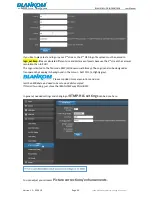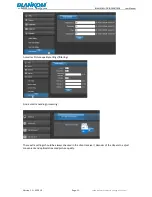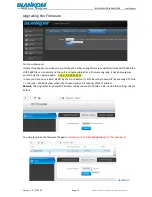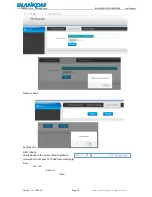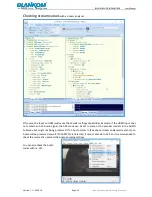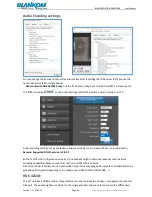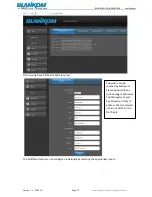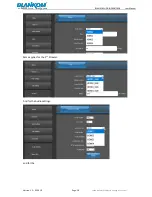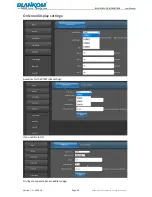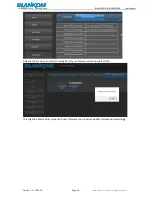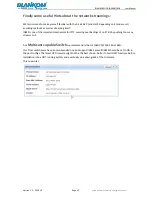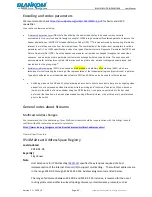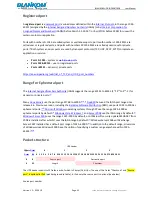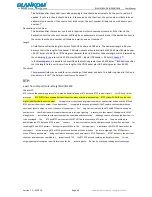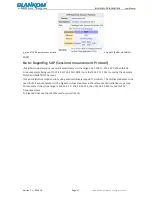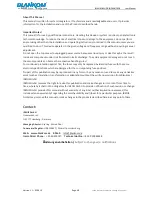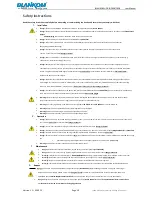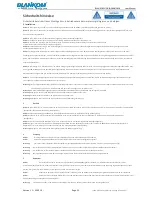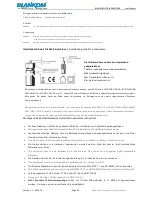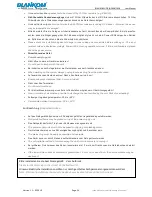
BLANKOM HDE-(4)264B/265B User Manual
Version 1.1 – 02-2019
Page - 43 -
techn. data are subject to change w/o notice!
Encoding and codec parameters
We recommend to check
https://en.wikipedia.org/wiki/H.264/MPEG-4_AVC
for basics and HEVC-
specialities.
Loss resilience features including:
A
Network Abstraction Layer
(NAL) definition allowing the same video syntax to be used in many network
environments. One very fundamental design concept of H.264 is to generate self-contained packets, to remove the
header duplication as in MPEG-4's Header Extension Code (HEC).
[36]
This was achieved by decoupling information
relevant to more than one slice from the media stream. The combination of the higher-level parameters is called a
parameter set.
[36]
The H.264 specification includes two types of parameter sets: Sequence Parameter Set (SPS) and
Picture Parameter Set (PPS). An active sequence parameter set remains unchanged throughout a coded video
sequence, and an active picture parameter set remains unchanged within a coded picture. The sequence and
picture parameter set structures contain information such as picture size, optional coding modes employed, and
macroblock to slice group map.
[36]
Flexible macroblock ordering
(FMO), also known as slice groups, and arbitrary slice ordering (ASO), which are
techniques for restructuring the ordering of the representation of the fundamental regions (
macroblocks
) in pictures.
Typically considered an error/loss robustness feature, FMO and ASO can also be used for other purposes.
…
Switching slices, called SP and SI slices, allowing an encoder to direct a decoder to jump into an ongoing video
stream for such purposes as video streaming bit rate switching and "trick mode" operation. When a decoder
jumps into the middle of a video stream using the SP/SI feature, it can get an exact match to the decoded
pictures at that location in the video stream despite using different pictures, or no pictures at all, as references
prior to the switch.
General notes about Streams:
Multicast Address Ranges:
We recommend, that the addressing of your Multicast streams should be in conjunction with this listings to avoid
conflicts with other network equipment or protocols.
https://www.iana.org/assignments/multicast-addresses/multicast-addresses.xhtml
One small part from this:
IPv4 Multicast Address Space Registry
Last Updated
2018-01-05
Expert(s)
Stig Venaas
Note
Host Extensions for IP Multicasting [
RFC1112
] specifies the extensions required of a host
implementation of the Internet Protocol (IP) to support multicasting. The multicast addresses are
in the range 224.0.0.0 through 239.255.255.255. Address assignments are listed below.
The range of addresses between 224.0.0.0 and 224.0.0.255, inclusive, is reserved for the use of
routing protocols and other low-level topology discovery or maintenance protocols, such as


